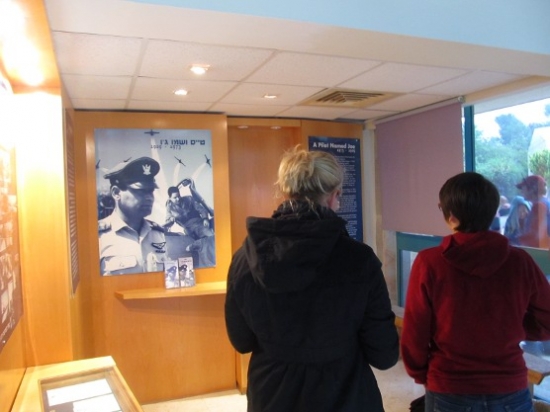
Text & Photo by Lydia Aisenberg
A founder of the Israeli Air Force together with legendary pilots Ezer Weizmann and Motti Hod, pilot and diplomat Joe Alon was mysteriously assassinated in the summer of 1973 a month before he was due to finish his term as Air Attaché at the Israeli Embassy in Washington D.C. and return with his wife and three daughters to Israel.
The family of Joe Alon, who was shot down in front of his wife and elder daughter outside their house in Maryland, has in recent times tried once more to open another investigation after a controversial book was published recently about the life and murder of Joe Alon.
Born in 1929, Alon’s immigrant parents returned to their native Czechoslovakia two years later because of ill health. Seven years later, fearing the rise of Nazism, they sent Joe and his brother to England where they were taken in by a childless Christian couple. At the end of the war the brothers returned to Czechoslovakia to look for their parents, only to discover that they had both been murdered by the Nazis.
The first Israeli flight course was held in Czechoslovakia in 1949, and Joe, at that time studying to be a goldsmith, completed the course with honors. He immigrated to Israel where he immediately joined the nascent Israel Air Force, serving as a pilot in the 100th Squadron C Wing in Beersheba. Advancing quickly in rank, experience and the type of aircraft he was piloting, Joe Alon was sent to England in 1965 to study at the Staff and Command College, and upon his return to Israel was appointed Commander of the Flying Safety Branch of the IAF.
Before taking up the post of Air Attaché in Washington, he was one of the leading IAF personalities involved in the construction of the Hatzerim Air Force base in the Negev, of which he also became commander when the base became operational.
During his time in Beersheba and Hatzerim the charismatic pilot also became well-known as a man who loved to walk on the land as much as he loved to fly in the skies above. He and his family often spent weekends hiking in the Negev in search of the beauty spots he saw from the air, and following his death, the road from Beersheba to the Hatzerim was named after him - Derech Joe Alon (the Joe Alon Way).
Alon particularly loved the Negev and the Bedouin residents of the region. Thus The Joe Alon Center near the Kibbutz Lahav museum focuses on the life and culture of the desert tribes and is dedicated to the pilot, diplomat and lover of nature who respected his fellow desert dwellers and their way of life.
Ouda Abu Kahud from the Bedouin township of Hura near Beersheba is a well-known guide in the area, and spends many a day at the Joe Alon Center explaining to visitors from Israel and abroad about the man the Center is named after. He accompanies visitors around the two-storey museum’s exhibits depicting the daily life of the Negev Bedouin and their counterparts in Sinai. Many of the latter are close relatives of the Bedouin with Israeli citizenship, the majority of whom live in the Negev, but also in communities throughout the Galilee.
“The Joe Alon Center deals with our Bedouin folklore, archeology of the Negev as well as nature and geography, and we organize programs educating children, youth and adults towards the love of man and nature. This is a most fitting memorial to Joe Alon,” explains Ouda Abu Kahud to a group of young people from many different countries and diverse backgrounds who are volunteering at Kibbutz Geva in the Jezreel Valley.
As he moves from exhibit to exhibit Abu Kahud tells the British, American, Scandinavian, South Korean, South African and Eastern European volunteers stories of his own family and their lifestyle before moving to a permanent home in Hura.
“There are around 180,000 Bedouin in the Negev at present but only about 10% live in traditional encampments, tend flocks of sheep and goats or work on the land. We try to pass on some of the traditions to our youth but they are more influenced by what is happening around them in Israeli society.”
“In my time we would only have had an opportunity of meeting a girl unsupervised at the well when she would come to draw water, but my sons drive to Beersheba and meet their girlfriends in a café or shopping mall,” he said with a grin.
Although Muslims are entitled to four wives, his father had only one until his mother suggested he take a second wife as she found it exhausting taking care of him and their very large family.
“My father wasn’t too keen at the beginning but mother convinced him, and she was actually the one who went out to find a suitable candidate. After the marriage, the second wife helped with everything in the family and my mother told us she wished she had thought of encouraging my father to take a second wife years before, as her life was so much easier,” said Ouda, much to the amusement but also astonishment of the group.
The museum shows aspects of the Bedouin lifestyle including the weaving of their colorful carpets, cushions and tents, their cooking habits and how they make cheese by shaking milk in gourds hanging on crossed sticks. Bedouin embroidery, jewelry and face masks of the different Bedouin tribes are also on exhibition.
As the group leave the Joe Alon Center, two fighter planes fly majestically overhead and one cannot help but think about where, without the great men of vision such as Joe Alon in the past, Israel’s armed forces would be today.
Joe Alon Center, near Kibbutz Lahav, Post Restante 85335, Negev
Tel: 08 991 3322 Email: office@joealon.org.il Web: www.joealon.org.il
 ESRA College Netanya is reborn
ESRA College Netanya is reborn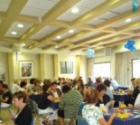 ESRA HERZLIYA ACTIVITIES
ESRA HERZLIYA ACTIVITIES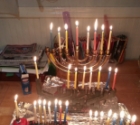 Chanukah Celebration at ESRA Rishon LeZion
Chanukah Celebration at ESRA Rishon LeZion  Art from the Heart
Art from the Heart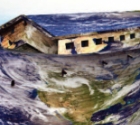 Jewish Art Returns to Jerusalem
Jewish Art Returns to Jerusalem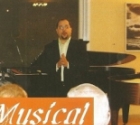 Musical Treats
Musical Treats Lydia Aisenberg
Lydia Aisenberg